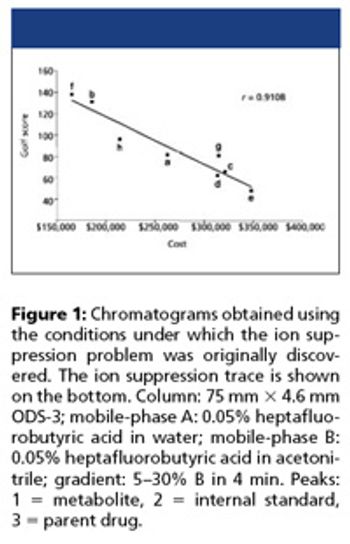
The Application Notebook
LCGC is planning to publish the next issue of The Application Notebook special supplement in June.

The Application Notebook
LCGC is planning to publish the next issue of The Application Notebook special supplement in June.
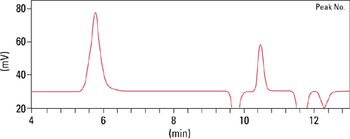
The Application Notebook
The EcoSEC GPC System and a set of TSK-GEL mixed-bed columns, both available from Tosoh Bioscience, were used successfully for obtaining high quality MWD data of a series of block poly-β-alkylalanoids with HFIP as the mobile phase in under 15 min.

The Application Notebook
There is an old axiom, attributed to various individuals, that holds: "Luck favors the prepared." This can apply to nearly any endeavor or project in life, as generally speaking, the harder you work, the more likely it is that good things will happen.

The Application Notebook
The RegisPack® chiral stationary phase allows for the enantiomeric separations of a wide variety of racemate classes.

The Application Notebook
The analysis of melamine in milk and other food products became urgent when first the pet food, and later the milk scandal were discovered in the U.S. and China.

The Application Notebook
One of the most important attributes of flexible fused silica capillary tubing is its outstanding strength. When made properly with a protective abrasion resistant coating and handled appropriately this material has proven to maintain its strength remarkably well.

The Application Notebook
Analyzing basic pharmaceuticals and peptides can be challenging with conventional ODS columns.

The Application Notebook
The U.S. EPA Office of Groundwater and Drinking Water released Method 524.3, "Measurement of Purgeable Organic Compounds in Water by Capillary Column Gas Chromatography/Mass Spectrometry, Version 1.0," in the Federal Register on August 3rd, 2009 (1, 2).

The Application Notebook
In ion chromatography, the presence of a large amount of matrix ions makes quantification of the target ions difficult.

The Application Notebook
Biomolecules, such as proteins and peptides, represent a growing number of pharmaceutical drug entities.
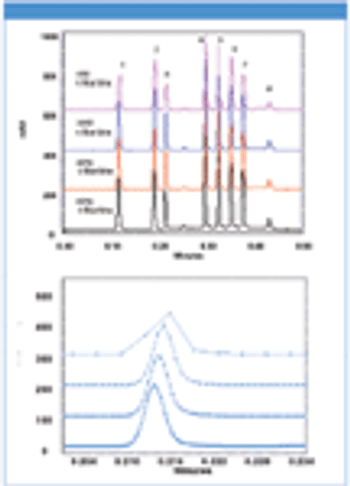
The Application Notebook
Ultra fast separations of acetaminophen, caffeine, propofol, and parabens are achieved in 30 s using the Accelaâ„¢ UHPLC system with the 80 Hz PDA detector.
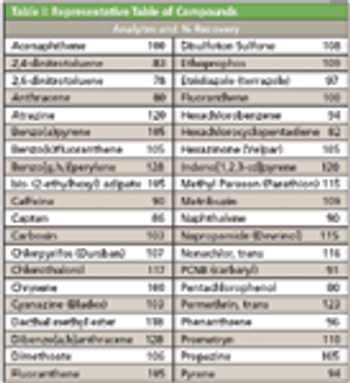
The Application Notebook
The extraction and analysis of semi-volatile organic (SVOC's) compounds can be problematic due to the wide range of analyte types and polarities.

The Application Notebook
Glyphosate (GP) is a non-selective, postemergence herbicide widely used for weed and vegetative control.

The Application Notebook
Pyrolysis GC?MS is a valuable tool for the material scientist. It is used principally for qualitative identification of polymers and their breakdown products. This application note displays how this technique can also be used for quantitative determination of polymer compositions by comparing peak area ratios of monomers and/or primary pyrolysis products.

The Application Notebook
Viruses are packets of infectious nucleic acid (either DNA or RNA) surrounded by a protective coat consisting of a large number of protein subunits.

The Application Notebook
Thermogravimetric analysis (TGA) measures the change in the weight of a sample as a function of temperature.

The Application Notebook
Capillary PLOT columns can be a simpler alternative to packed column setups for propylene analysis. Here we demonstrate a single column setup that provides fast baseline resolution of propylene impurities.

The Application Notebook
The determination of PCBs, as well as other environmental contaminants, in fish tissue requires extensive sample cleanup prior to analysis by gas chromatography with an electron capture detector (GC-ECD).

The Application Notebook
Spice and fragrance essential oil raw materials frankincense (Boswellia carterii) from India and Somalia, sandalwood (Santalum album) from India and Indonesia, and corn mint (Mentha haplocalyx) from the United States were analyzed for on-site analytical profiling and confirmation of quality and purity of therapeutic grade essential oils from raw materials.

The Application Notebook
ISOLUTE EPH columns have been developed to fractionate pentane or hexane based soil extracts into aliphatic and aromatic hydrocarbon fractions (C8–C40 aliphatics, C10–C22 aromatics).
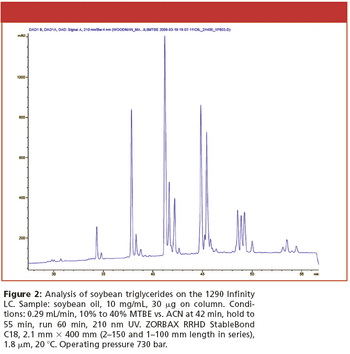
The Application Notebook
The Agilent 1290 Infinity LC has significant capabilities for a wide range of HPLC and UHPLC applications.
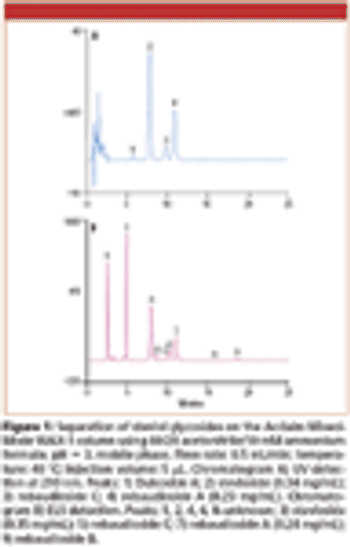
The Application Notebook
The stevia plant and its extracts have long been used as sweeteners in Asia and Latin America. Two steviol glycosides present in plant tissue, stevioside, and rebaudioside A, are largely responsible for the sweet flavor (1).

The Application Notebook
Separation of polar compounds by conventional reverse phase chromatography can be challenging due to their poor retention. Other HPLC approaches include normal phase chromatography (NPC) and its variation, hydrophilic interaction chromatography (HILIC).
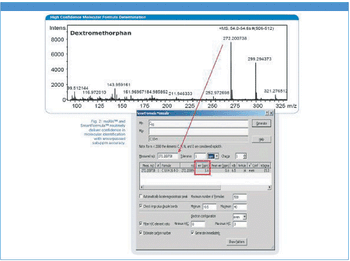
The Application Notebook
Modern analytical applications often demand definitive tandem MS results on ever more complex samples utilizing fast separation techniques.
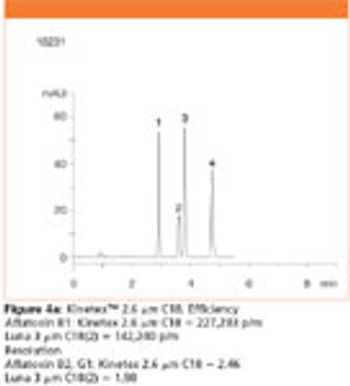
The Application Notebook
Over the past several years column manufacturers have been introducing columns packed with smaller particle sizes – sub-2 µm and 3 µm – to take advantage of the improvements that such small particle size columns offer.
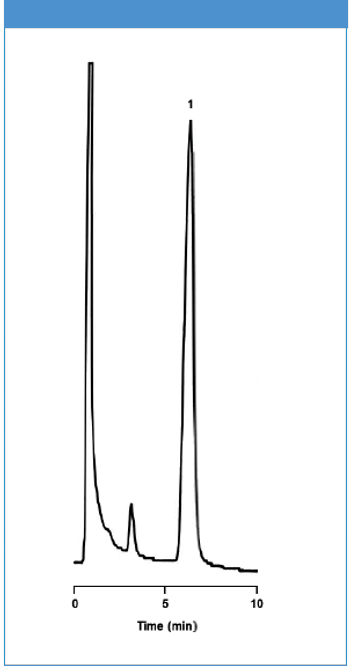
The Application Notebook
Hamilton Company is best known for manufacturing precision fluid measuring products, including syringes for HPLC and GC.
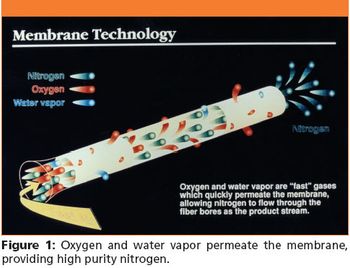
The Application Notebook
Since the gas flow required for the separation step in gas chromatography is frequently lower that that required to optimize the detection, nitrogen is used as a make-up gas to increase the gas flow for detection.
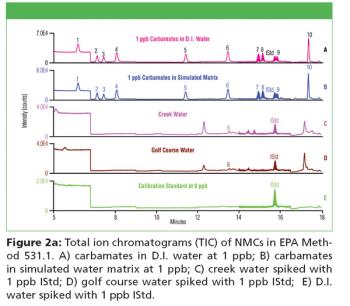
The Application Notebook
N-methyl carbamates (NMCs) are widely used as pesticides and have been reported in the environment and food.
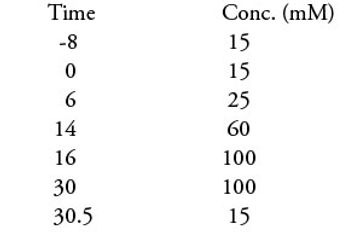
The Application Notebook
The characteristic composition of ionic liquids (an organic cation or anion and a counterion, in either organic or inorganic form) exhibits unique properties, such as extremely low vapor pressure, excellent thermal stability, electrical conductivity, high polarity, and miscibility with various types of solvents.
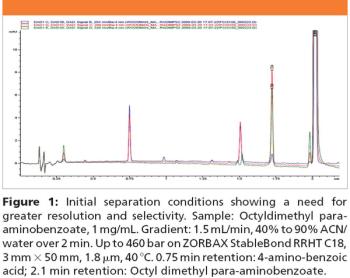
The Application Notebook
The combined benefits are demonstrated by a separation of impurities found in a sample of octyl-dimethyl-4-aminobenzoate.